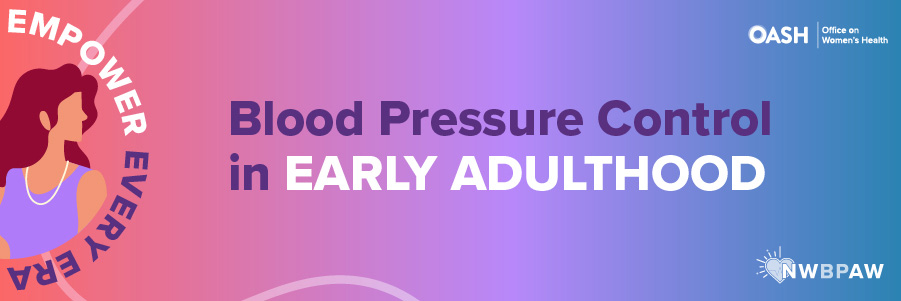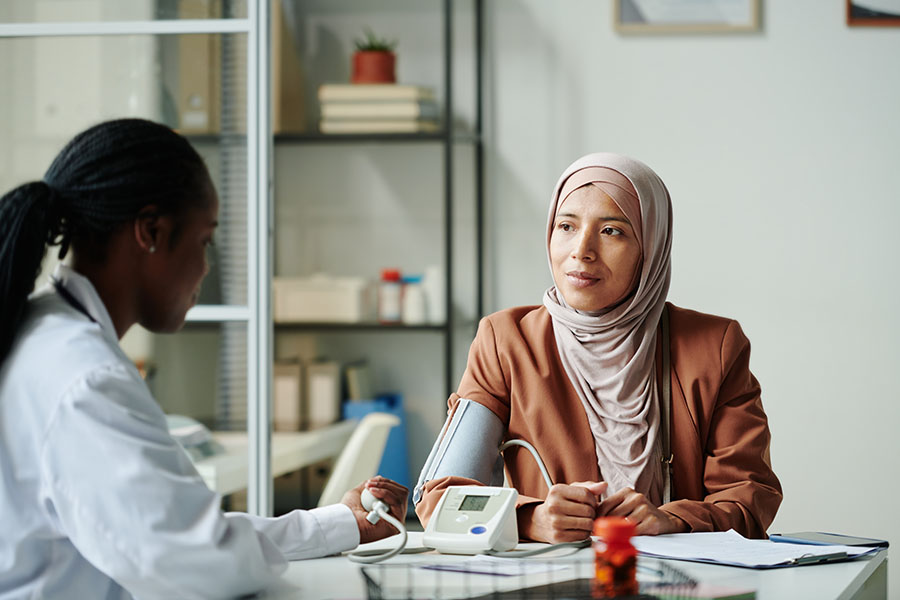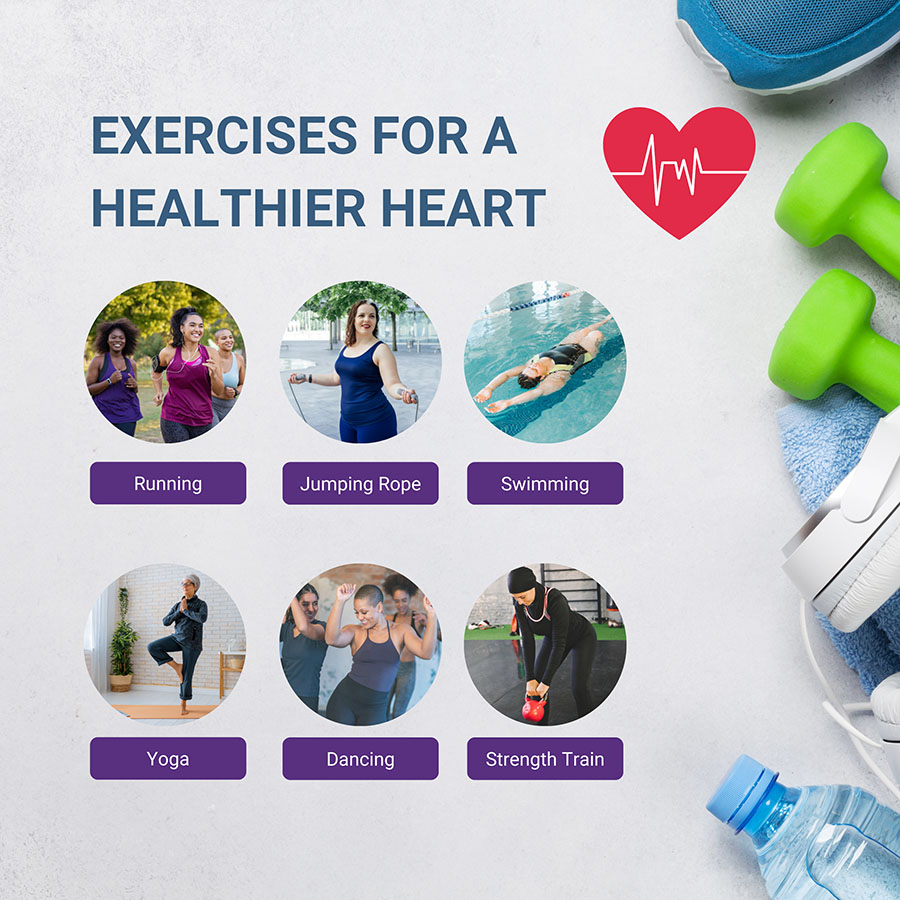
Did you know that women in their 20s, 30s, or 40s can still be at risk for high blood pressure (hypertension)? In fact, more than 1 in 5 women ages 18 to 39 have high blood pressure, often without knowing. It’s sometimes called the “silent killer” because there are usually no symptoms. But if high blood pressure is not treated, it can lead to serious health problems.
Having high blood pressure in early adulthood increases your risk of experiencing a stroke, a heart attack, or another cardiovascular event in middle age. It can also cause kidney damage, eye damage, and brain issues later in life.
The good news is that there are easy ways to check your blood pressure and make small changes that can help to prevent and control high blood pressure at any age. Early adulthood is the perfect time to start habits that can help keep your blood pressure in a healthy range and protect your heart.
High Blood Pressure Symptoms in Young Women
For all non-pregnant adults, a normal blood pressure reading is 120/80 mm Hg or lower. If your numbers are higher, you may have hypertension even if you feel fine. High blood pressure affects young women differently than it does men. Before age 40, women usually have lower blood pressure than men. But around age 30, women’s blood pressure begins to rise, increasing their risk for heart disease earlier. It’s important to stay informed about your blood pressure numbers, even if you feel healthy.
Causes of High Blood Pressure in Young Women
Certain factors can contribute to high blood pressure in younger women specifically, for example, becoming pregnant or taking certain medications, such as hormonal birth control. Research has found that the risk of high blood pressure from birth control pills is greater in women who experience obesity, have kidney disease, or have a family history of high blood pressure.
High Blood Pressure Symptoms in Young Women
Young women with high blood pressure may experience symptoms such as:
Factors that contribute to high blood pressure in general are also important in young women, including:
- A poor diet (too much sodium and not enough potassium)
- A lack of physical activity
- Increased body weight or obesity
- Kidney issues
- Poor sleep habits
- Alcohol and caffeine consumption
- Smoking or vaping
- A family history of high blood pressure
How to Monitor Blood Pressure
If you are over the age of 20, even if you have had normal blood pressure and don’t have risk factors for high blood pressure, you should get your blood pressure checked at least once every year. You can do this at your health care provider’s office, some pharmacies, or even at home with a blood pressure cuff.

You should check your blood pressure more often if you have or are at risk for high blood pressure. Follow a blood pressure monitoring routine. For example:
- Take your blood pressure in the morning before eating.
- Take your blood pressure again in the evening.
- Take two or three readings each time you measure.
- Keep a log of your readings and contact your health care provider if you notice differences.
How to Prevent and Control High Blood Pressure
It’s never too early to start monitoring your blood pressure and setting yourself up for success later in life. Small lifestyle changes can lower or help manage your blood pressure.
- Get proper nutrition.
- Include fruits, vegetables (especially those rich in potassium and fiber), and protein in your meals and protein in your meals and snacks.
- Try the DASH (Dietary Approaches to Stop Hypertension) diet. Always speak to a health care provider before starting a new diet.
- Stay active.
- Aim to get at least 2 ½ hours (150 minutes) of moderately intense physical activity per week (about 30 minutes per day, five days a week), such as biking or walking.

- Practice self-care to manage stress.
- Meditate. Practice gratitude and mindfulness. Make time for hobbies.
- Limit alcohol and caffeine.
- Aim for no more than one alcoholic drink per day, and drink no more than 4 cups (32 ounces) of coffee per day.
- Avoid smoking and vaping.
- Talk to a health care provider for help with quitting smoking.
- Get enough sleep
- Aim for seven to nine hours of sleep per night.
- Stick to a sleep schedule. Keep your sleeping area quiet and dark. Limit napping.
Build heart-healthy habits into your daily routine and set realistic goals. Involve friends and family members to support your changes and hold you accountable. The sooner you start, the better you can protect your heart health for the future.
Stories from Women with Lived Experience
Discover Jude’s Story: Heart Disease in Early Adulthood
Watch Jude Maboné share her firsthand experience with multiple heart attacks at a young age and her advice to other women on staying informed about their own heart health.
Check out The Heart Truth® program's Yes, YOU! initiative for more information on heart health in young women. The truth is heart disease is the leading cause of death for women. About 1 in 16 women aged 20 or older have coronary heart disease, the most common type of heart disease, and 75% of women have one or more risk factors. If you are in your 40s, your 30s, or even your 20s, you could be at risk for heart disease. Learn more and explore resources for young women at https://www.nhlbi.nih.gov/education/heart-truth/yes-you-can-prevent-heart-disease.
Resources to Learn More
- DASH Eating Plan — NIH National Heart, Lung, and Blood Institute (NHLBI)
- Find a Health Center — Health Resources and Services Administration (HRSA)
- Move Your Way — HHS Office of Disease Prevention and Health Promotion (ODPHP)
- Preventing High Blood Pressure — Centers for Disease Control and Prevention (CDC)
- Self-Measured Blood Pressure Monitoring — CDC’s Million Hearts®
- The Heart Truth® program’s Yes, YOU! initiative — NIH National Heart, Lung, and Blood Institute (NHLBI)
- Self-Measured Blood Pressure – NIH National Heart, Lung, and Blood Institute (NHLBI)
- My Blood Pressure Log – Reproductive Health National Training Center


